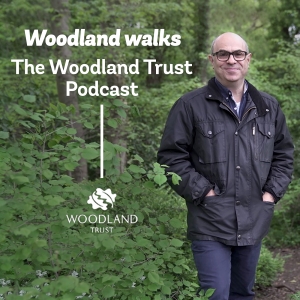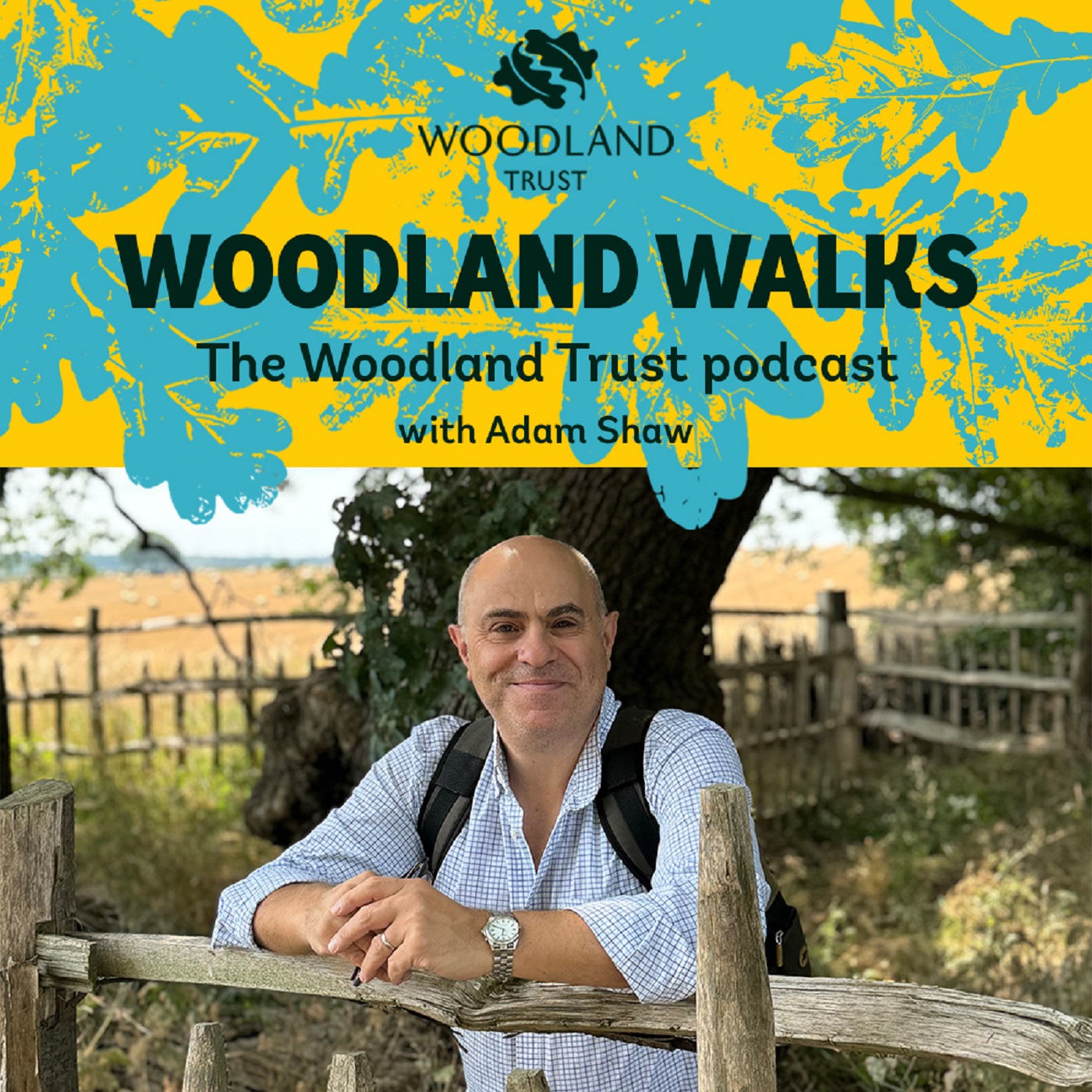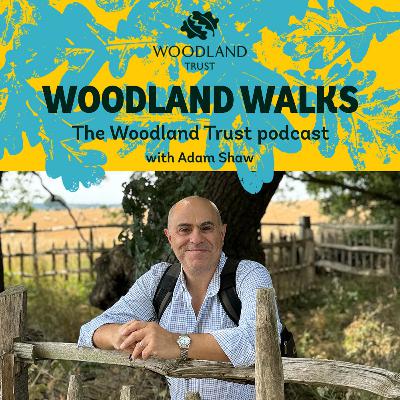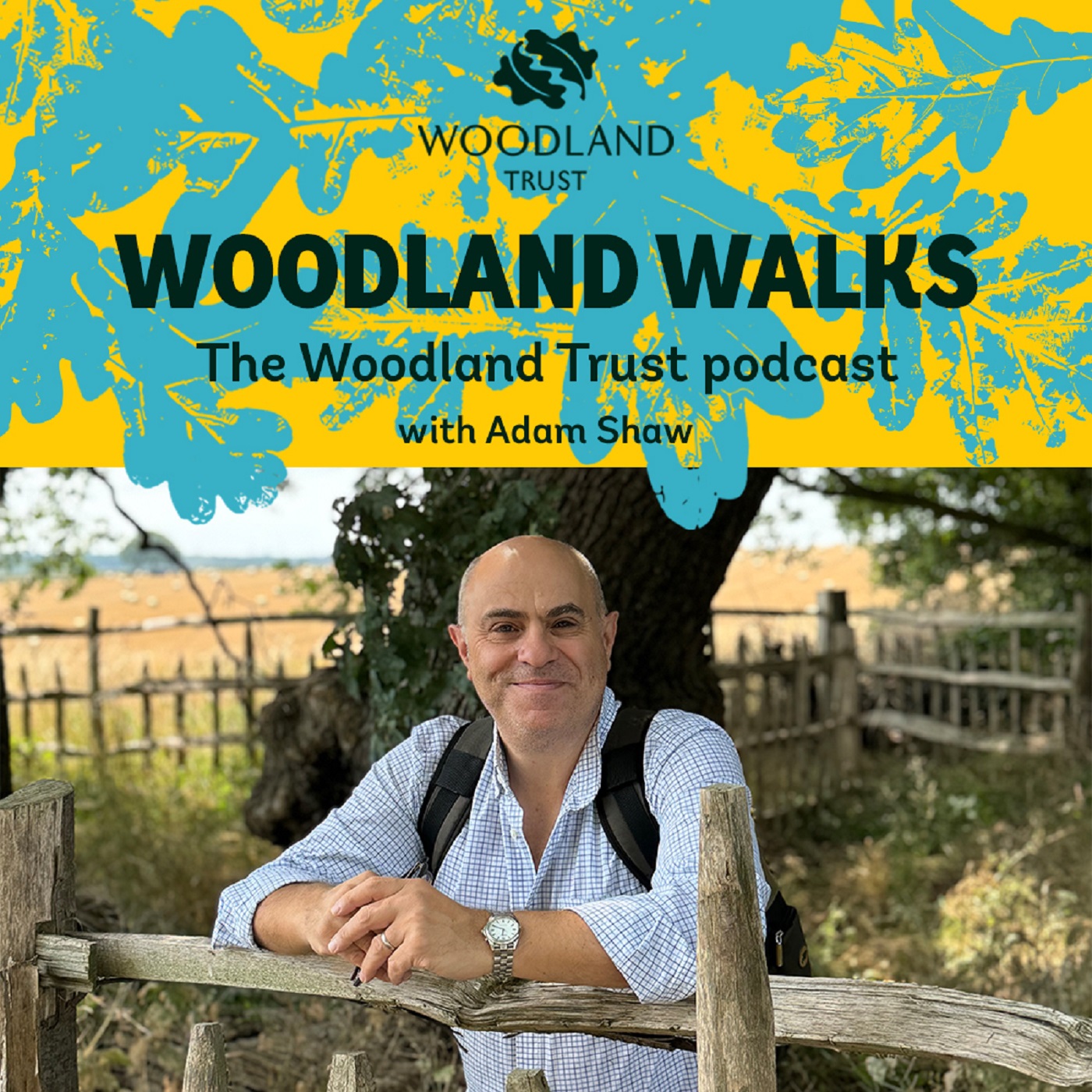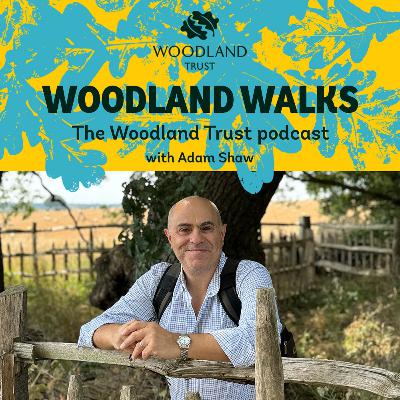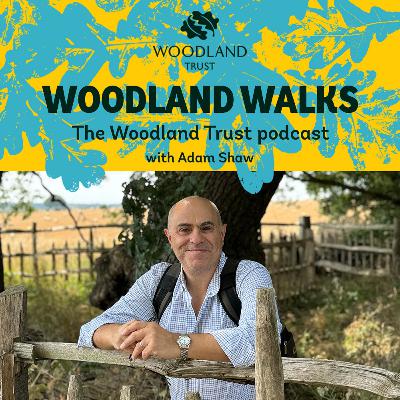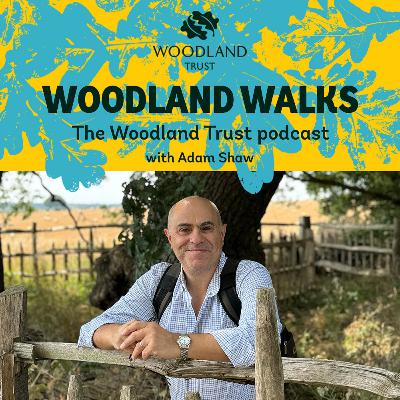16. Designing Yonder Oak Wood, Devon
Description
I met the Yonder Oak Wood team back in March to discover how this landscape will be transformed for people and wildlife, and what designing a new wood involves. The vision is to attract plentiful wildlife with healthy habitat that offers refuge from weather extremes and fights climate change. The local community has been involved from the off - volunteer Sally Burton joins us to explain what she gets up to, how excited everyone is about the future and what volunteering means to her. We also hear of efforts to make the site more sustainable, from re-usable fences to tree guard trials, and I get my hands dirty planting a tree.
Don't forget to rate us and subscribe! Learn more about the Woodland Trust at woodlandtrust.org.uk
Transcript
You are listening to Woodland Walks, a podcast for the Woodland Trust presented by Adam Shaw. We protect and plant trees for people, for wildlife.
Adam: Well, today I'm off to, well, the wonderfully named Yonder Oak Wood. And although it's called a wood, it's not really a wood yet. This is a very exciting project, but it's in the very early stages of creation. It's near Exmouth in Devon. The Woodland Trust plans on planting, I think something like 13,000 trees there, creating a new environment for nature and wildlife to bounce back. Sounds a great place to go, I'm going to meet a few people there. First off, though, is my contact at the Woodland Trust today, Rachel Harries.
Rachel: So this site is Yonder Oak Wood, it's not quite a wood yet, as you can see, but the Woodland Trust bought it in March last year with the aim of creating, creating a new wooded landscape here. So it's 54 hectares, we think it is the biggest woodland creation site that the Trust has done in the South West in in 20 years, so 54 hectares, that's equivalent to about 100 football pitches, and it sits on the sort of two sides of a hidden valley, just a couple of miles inland from the South Coast of Devon. So where we're stood, we can actually see out to the mouth of the Exe estuary, to Dawlish and and possibly to Torquay there as well.
Adam: I I think you can just see the estuary over there can't you, just beyond that last bunch of trees is that right?
Rachel: You absolutely can, yeah, you absolutely can. And actually the other day when I was here, I saw a white bird fly over that was an egret that was obviously based in the estuary, so really exciting.
Adam: And why, now this site, I happen to know is, it it's quite important because of the anniversary and just explain to me, explain to me a little bit about that.
Rachel: That's right. Last year was the 50th anniversary of the Woodland Trust and the first site that our founder Ken Watkins ever bought was in Devon. So it's really emblematic that we are now creating a new woodland, probably I think it's about 30 miles away as the crow flies from the Avon Valley Woods where we were started. But we're now creating a new woodland in the county of our birthplace, which is incredibly exciting, and we wanted to create something that would have meaning for local people and it would like, it would be tied into the local environment, so we did things like we looked at the name of the stream, we looked at old field names and we came up with a shortlist of names that we could then offer out to the local community and ask them which one, which one they wanted and what they wanted to call this new site. And one of the field names was Yonder Oak Park. And that's really quite special because as you look across the site, you can see all these incredible old oak trees over yonder, off in the distance. So I have to admit that was my favourite but we let the community choose and they voted for Yonder Oak Wood.
Adam: Right well you're gonna take me on a little walk around here, so just explain to me a little bit about what we're gonna see.
Rachel: OK. Well, we're starting here on a sloping field that has old oak trees dotted about the landscape. Some of these are a couple of hundred years old and there's one in particular which we can see just off in the distance, which is one of my, one of my favourites that is standing almost on on stilts. And the stilts are actually its roots that would have once been embedded in a Devon bank, which is a sort of a solid hedgerow that we find in Devon that has trees planted on the top and the hedgerow and the bank has been taken away. So the tree now kind of stands about a metre above the height that it would have once been.
Adam: Which one, I can't tell which one that is?
Rachel: So can you see there’s two in that field over there, we'll walk past it so we can have another look at it.
Adam: Yes, I see that, I see that. OK, maybe my eyesight's not very good. So and this goes, these are currently separate fields and there's what a field and then a hedgerow, another field, then another hedgerow, then the tree supposedly on stilts and beyond that what looks like a solar panel farm. So is this the, what will be the new woodland all the way up to the solar panels?
Rachel: We've worked to design a mixture of of habitats here, so we have about 5 different fields where we're doing much more intensive planting and that's what people would kind of imagine that would grow into what people would imagine a woodland would look like, but then in some of these other fields, so the field that we're stood in and a couple of other fields that you can kind of see off in the distance there, we're going to do a mix of open space, glades and groves. We'll plant some more of these kind of trees that will be allowed to to thrive and to spread on their own, but we'll also plant a mixture of of scrub and shrubs, so that's more lower growing trees, things like blackthorn, hawthorn dogrose, spindle, just to create a really good mix of habitats for all the birds and insects and bats that we, you know, we know are going to thrive here.
Adam: And you, you've arranged for us to meet a a couple of people, haven't you?
Rachel: Yeah. So we're going to be walking around with Paul Allen, he's our site manager and we're going to meet Sally Burton, who is one of our volunteers here.
Adam: The weather's been kind to us so far, but it is a little nippy so we shouldn't keep them waiting. So do you wanna lead on and we'll go meet them.
Rachel: Yes, let’s go.
Adam: And I'm told there there was some sea shantying going on here, which strikes me as odd because we're not, we're not in the middle of the sea or anything. So what's the story behind that?
Rachel: Well, we're not far from the sea. We can see, we can see the, we can see the sea here. But we were contacted by a a group of local acapella singers who were inspired by what we're doing here and had decided to take some modern folk songs and to rewrite them to to reference the wood. So they came out one weekend and they sang to our to all of our planters, but we also talked a little bit about sea shanties, which I like the idea of becoming tree shanties. So they took a traditional sea shanty and they changed the lyrics. So we now have a song all about Yonder Oak Wood that we could sing along to.
Adam: Great. And that we're going to hear that now from from you. So here's Rachel with her tree shanty. Is that right? No?
Rachel *laughs* I don't think so.
Adam: Do you have a recording of it?
Rachel: I we do have a recording of it actually, yes.
Adam: You never know. I don't know. Maybe a couple of teas or beers later, I might persuade you to sing. Alright. Brilliant, Rachel. Thank you very much.
Rachel: Thank you. That's great. So here's Paul. He's the site manager and he's going to take us on a little walk down through Yonder Oak Wood.
Adam: Paul, thank you very much. Nice to see you. So you are the site manager.
Paul: Hello there. I am. Yes, I'm responsible for turning these fields into a wild, wildlife rich area.
Adam: OK. Well, go on. Let's lead on. We can have a chat about that. Brilliant. So yeah. So these are early days, Paul. I understand you you are responsible for designing the woodland. What does that actually involve?
Paul: So really, I mean the the the first place you you start is is kind of kind of getting a sense of where the place is and what the place is and the the key bit here as we walk through it is you can see these big old oak trees and so we've based a lot of the design on that. So you can picture in the future lots more of these big old trees that will have lots of deadwood, lots of rot holes where birds can nest, and invertebrates burrow in. And the way we're kind of going to maintain it is we're we're going to put animals in and have low intensity grazing and then you kind of build in where the views are.
Adam: I mean it must be really exciting because it can't be that often that you you get actually a green field or literally a greenfield site. But it's more or less bare. It's a plain piece of paper for you to design. That's quite, I mean, it's exciting, quite an honour, perhaps a little daunting?
Paul: I've I've done probably 30 years of nature conservation and most of what you do is you take bits of habitat and you try and restore them, you try and protect them. You very rarely get a chance to actually create something brand spanking new. It is really phenomenally exciting for all of us, because if you think about it in the future, 100 years time, this place will be on maps. It will be on aerial photographs, you know so not only are we doing stuff that's great for wildlife and great for climate, we're effectively creating history as well, which is an awesome thing to be a part of.
Adam: Yeah, so on the map it should say Yonder Oak Wood, brackets Paul Allen. *both l

